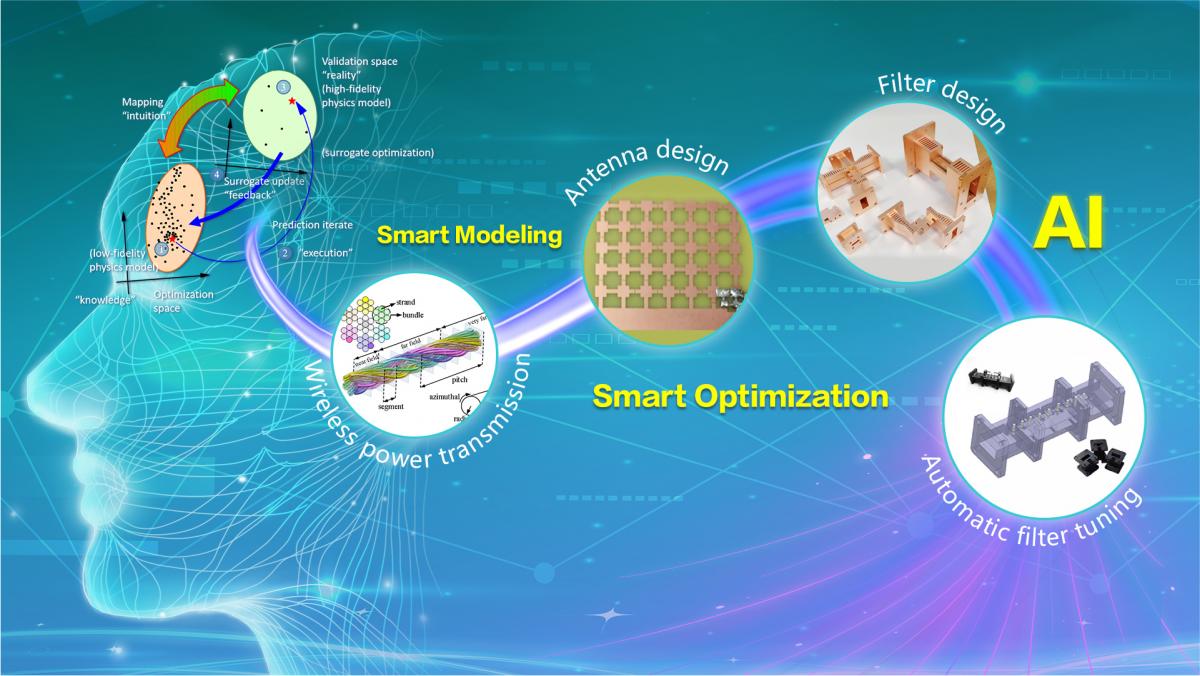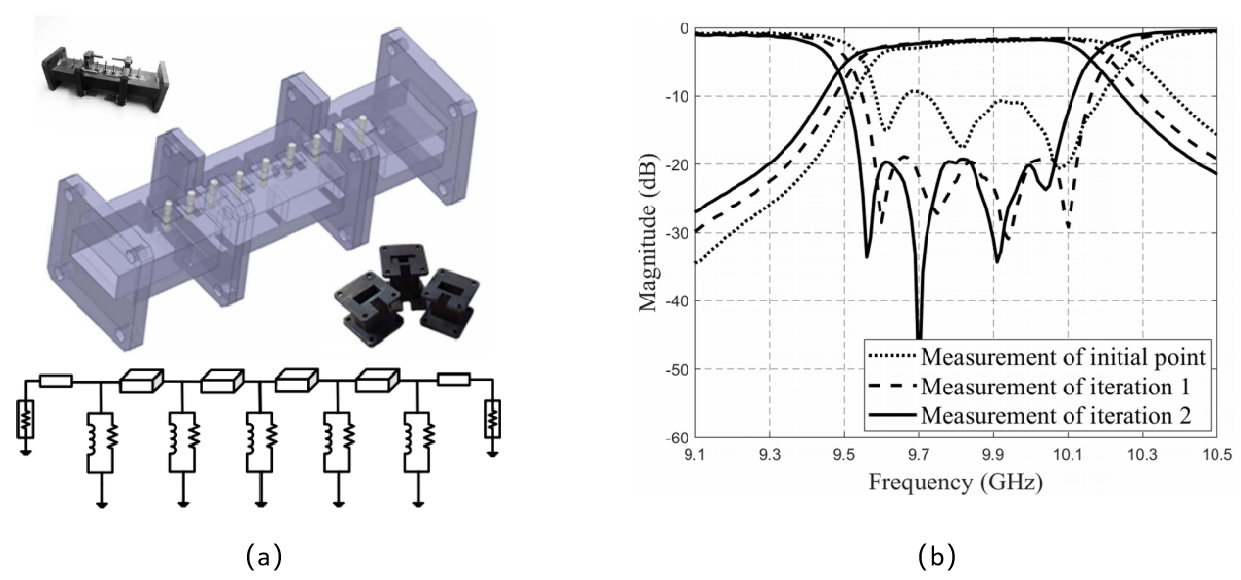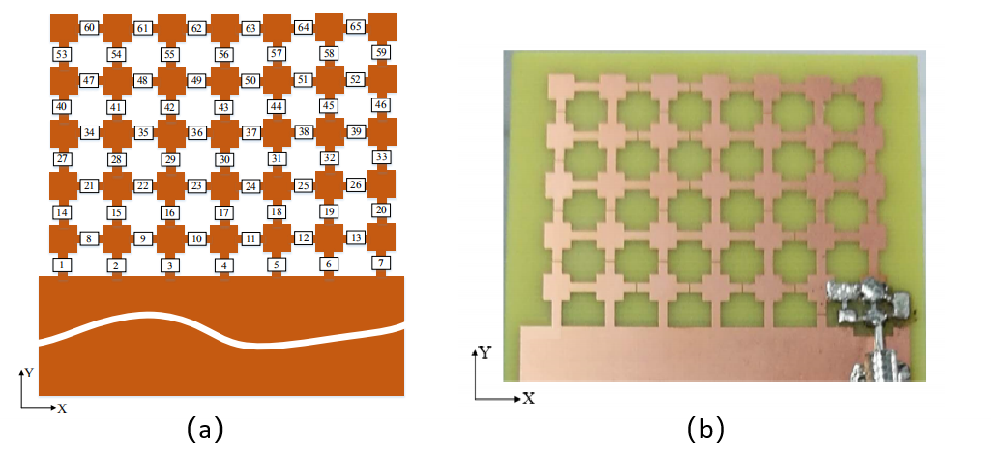New techniques found by researchers at Southern University of Science and Technology (SUSTech) could allow for the faster design of critical components for industrial and consumer goods, getting them into the hands of customers faster.

Over the last six months, Professor Qingsha Cheng (Electrical and Electronic Engineering) has led his research team to publish high-quality research papers in high-impact academic papers, with their research focusing on human knowledge-assisted “smart” modeling, optimization, and artificial intelligence (AI). These papers were published in top journals published by the Institute of Electrical and Electronics Engineers (IEEE).
One such paper was published in IEEE Transactions on Microwave Theory and Techniques (IF = 3.756), under the title “A General Coupling Matrix Synthesis Method for All-Resonator Diplexers and Multiplexers.”
Their paper reported a matrix synthesis method based on the optimization method for diplexers and multiplexers (GACMS). Their GACMS method was tested by six complex practical problems, with the results obtained for all (Fig 1). 
Fig.1 (a) Coupling topology and (b) simulation results of a test case for GACMS
The first author was SUSTech doctoral candidate Yang Yu. The co-corresponding authors were Professor Qingsha Cheng (SUSTech) and Dr. Bo Liu (University of Glasgow). Additional contributions came from the University of Birmingham.
Another paper from the group was titled, “Surrogate Model-Based Space Mapping in Postfabrication Bandpass Filters’ Tuning,” and published in IEEE Transactions on Microwave Theory and Techniques (IF = 3.756). Their paper summarized the current literature on post-fabrication bandpass filter tuning techniques. They then proposed a stable and accurate computer-aided tuning method, which was shown experimentally to work successfully (Fig 2).

Fig. 2 (a) 3-D printed metallic air-filled waveguide filter and (b) Comparison between the response of initial point and prediction in each iteration
The co-first authors were visiting doctoral candidates to SUSTech Song Li and Xiaolin Fan (from the University of Regina). Professor Paul Laforge was a co-author, and Professor Qingsha Cheng was the corresponding author.
The third paper was published in IEEE Microwave and Wireless Components Letters (IF = 2.374), under the title, “An Efficient Hybrid Sampling Method for Neural Network-Based Microwave Component Modeling and Optimization.” Their paper provided a unique method for modeling and optimizing microwave components. Their technique sought to exploit potential optimal solutions. Their test results showed that they were able to get better modeling and optimization performance than conventional sampling methods.

Fig. 3 (a) Geometry of a bandstop microstrip filter (b) modeling results with 200 different samples (c) EM response of the optimal design with 200 different samples
The first author was doctoral candidate Zhen Zhang, and the corresponding author is Professor Qingsha Cheng. SUSTech was the corresponding affiliation.
Professor Qingsha Cheng’s group also published a research paper entitled “Pixel Antenna Optimization Using N-Port Characteristic Mode Analysis.” That paper was in IEEE Transactions on Antennas and Propagation (IF = 4.435). They created a new design for antennas that optimizes the N-port characteristic mode analysis. Its computational speed was up to one hundred times faster than traditional approaches to CMA, while also extending and improving its application.

Fig. 4 (a) The simulation model and (b) prototype of tri-band 5×7 pixel antenna
The first author was doctoral candidate Fan Jiang. The corresponding author of the paper was Professor Qingsha Cheng, and additional contributions came from the Hong Kong University of Science and Technology (HKUST). The corresponding affiliation is SUSTech.
The group published a research paper entitled “A Compact Triple-Fed High-Isolation SIW-Based Self-Triplexing Antenna” in IEEE Antennas and Wireless Propagation Letters (IF = 3.51). Their development of a novel and complex self-triplexing antenna results in an antenna that operates at three different frequencies. Their unique design allows for individual frequency tuning using a single variable, with the antenna being simple, compact, and perfect for handheld microwave devices.

Fig. 5 (a) Fabricated prototype of proposed planer antenna and (b) comparison of simulated and measured results (S-parameters and gain total)
The first author was postdoctoral researcher Dr. Sounik Kiran Kumar Dash. The corresponding author was Professor Qingsha Cheng. The corresponding affiliation is SUSTech.
The final paper in question was titled, “Fast Simulation of Litz Wire Using Multilevel PEEC Method” and was published in IEEE Transactions on Power Electronics (IF = 7.224). The group spoke about a partial element equivalent circuit (PEEC) method that significantly improves the efficiency at both the packing and twisting level.

Fig. 6 A Litz wire and the coordinates of the strand inside the bundle
Litz wire has been an essential component for the power electronic design to reduce the high-frequency eddy loss. However, there are not many efficient algorithms to simulate Litz wires due to their complex structures. The current method requires a high computational cost, which reduces its attractiveness. The research team proposed a meshing method that reduces the complexity of the calculation, and therefore the calculation time.

Fig. 7 Calculation framework of the proposed Multilevel PEEC Method
The first author was doctoral candidate Jiahua Lv. The co-corresponding authors were Professor Qingsha Cheng and Research Assistant Professor Hongcai Chen. Additional contributions came from Hong Kong Polytechnic University (PolyU). The first correspondent affiliation is SUSTech.
The works were funded in part by the National Natural Science Foundation of China (NSFC) and the Shenzhen Science and Technology Innovation Commission.
Proofread ByYingying XIA
Photo ByDepartment of Electrical and Electronics Engineering, Yan QIU